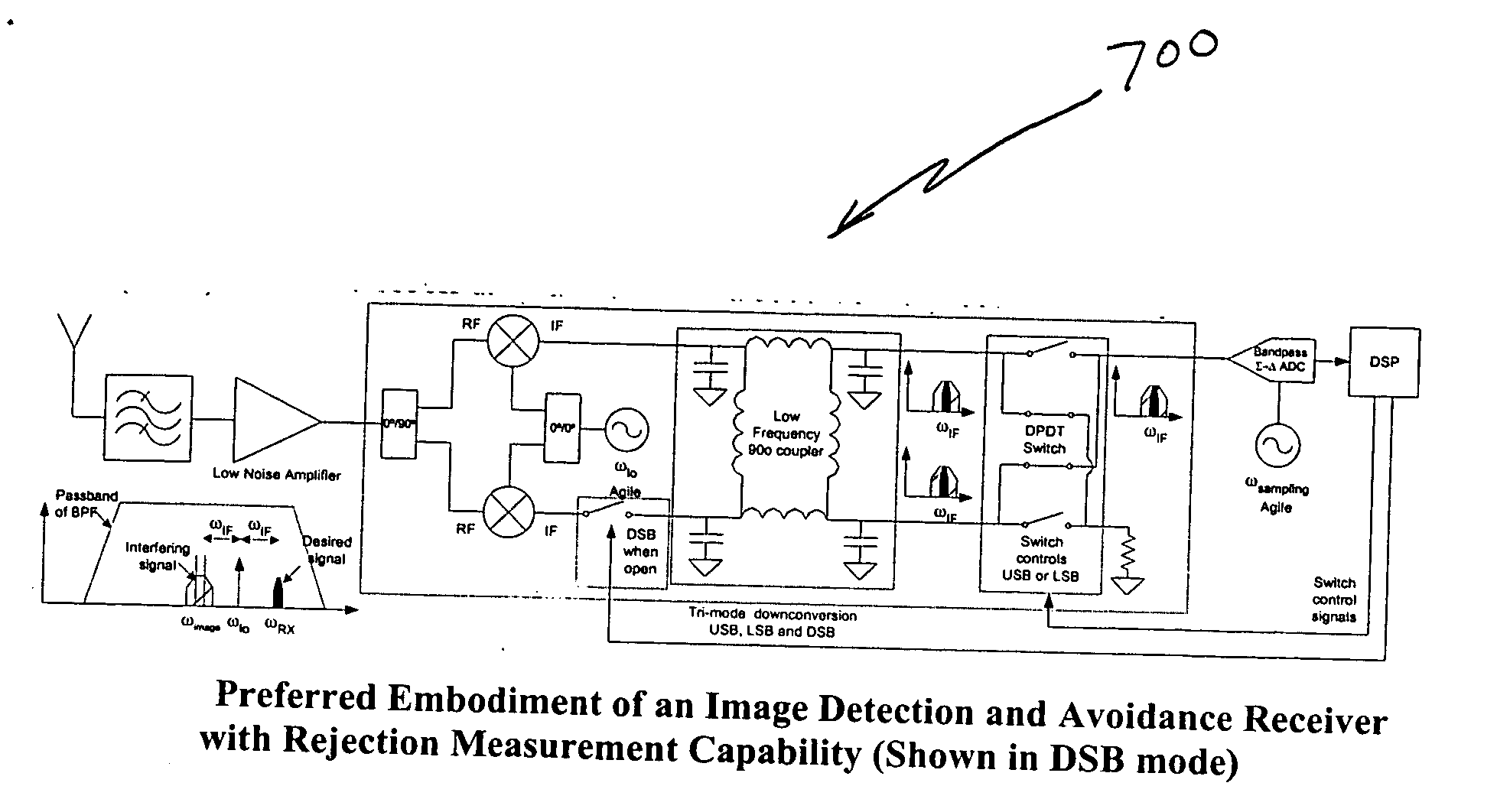Very low intermediate frequency image rejection receiver with image interference detection and avoidance
a receiver and intermediate frequency technology, applied in the field of radio frequency receivers, can solve the problems of not achieving cost savings, reducing costs, and forming a very large unwanted dc component in the receiver, so as to minimize the amount of power in the image band, minimize the amount of interference, and mitigate image interference.
- Summary
- Abstract
- Description
- Claims
- Application Information
AI Technical Summary
Benefits of technology
Problems solved by technology
Method used
Image
Examples
Embodiment Construction
[0028]FIG. 4 illustrates a VLIF image rejection receiver 400 with image detection and avoidance. The VLIF receive 400 includes an image reject mixer 402 with dual outputs, one output 414 for a desired frequency signal and another output 412 for an image frequency signal. A measuring device for measuring power at the dual outputs of the image reject mixer 402 can be implemented using a suggested frequency plan. Immediately prior to a receiver operation, an image detection test would be performed. If a weak power level in the image band was detected, the receiver could proceed with the current frequently plan. If a strong image was detected, the frequency plan would be adjusted, and the image would be measured again. The cycle would continue until a frequency plan with a weak image was identified. An algorithm 500 illustrating how to implement the measuring device for sampling the frequency plan is illustrated in FIG. 5.
[0029] In FIG. 5, the algorithm 500 begins with the step of sele...
PUM
 Login to View More
Login to View More Abstract
Description
Claims
Application Information
 Login to View More
Login to View More - R&D
- Intellectual Property
- Life Sciences
- Materials
- Tech Scout
- Unparalleled Data Quality
- Higher Quality Content
- 60% Fewer Hallucinations
Browse by: Latest US Patents, China's latest patents, Technical Efficacy Thesaurus, Application Domain, Technology Topic, Popular Technical Reports.
© 2025 PatSnap. All rights reserved.Legal|Privacy policy|Modern Slavery Act Transparency Statement|Sitemap|About US| Contact US: help@patsnap.com



